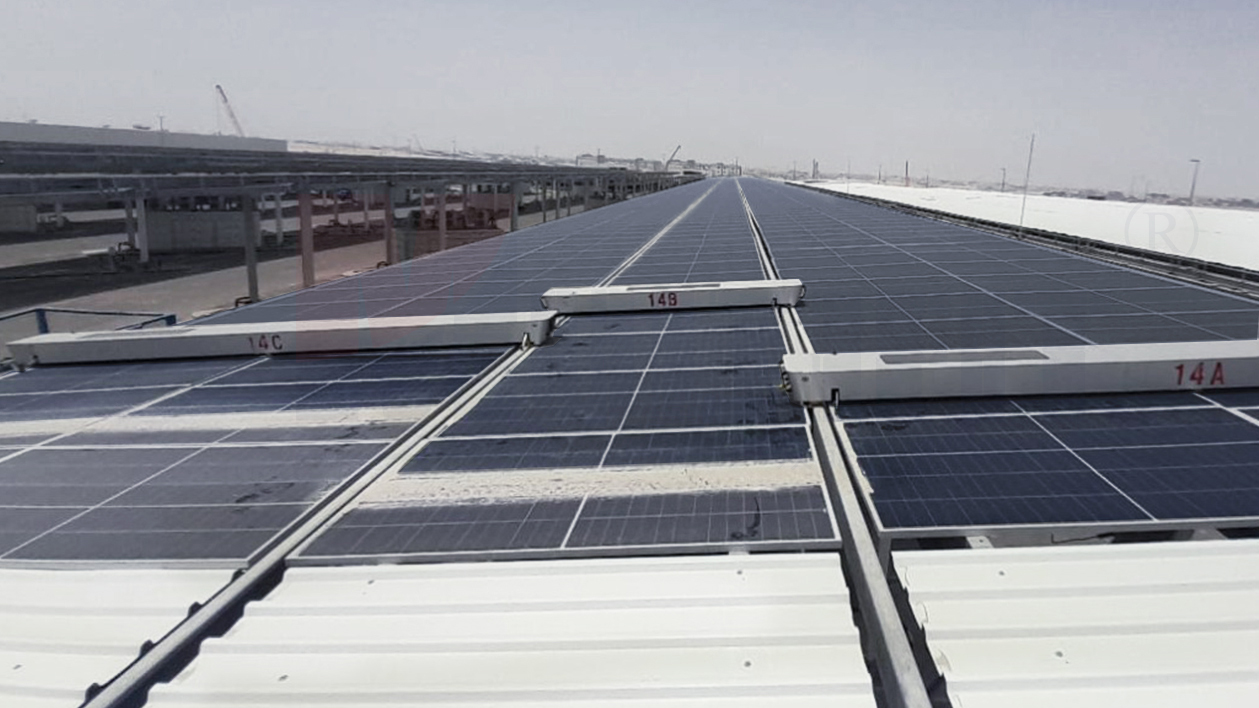China's export growth in the first eightmonths of this year has narrowed compared with previous years. In particular,due to multiple factors such as China's "zero clearing" policy forepidemic prevention and control, extreme weather, and weakening overseasdemand, China's foreign trade growth momentum in August has slowed sharply,while China's photovoltaic industry has achieved remarkable export results.According to Chinese customs data, in the first eight months of this year,China's solar cell exports increased by 91.2% over the same period last year,including 138% to Europe. As the war in Ukraine led to the rise in Europeanenergy prices, Europe has a strong demand for the photovoltaic industry, andthe price of polysilicon, the raw material for the production of solar panels,has also continued to rise. 
China's photovoltaic industry has achievedrapid growth in the past decade, and the global photovoltaic module productioncenter has been transferred from Europe and the United States to China. Atpresent, China is the largest country in the world's photovoltaic industry,Europe is the main destination for China's photovoltaic products export, andemerging countries India and Brazil also have strong market demand. Europeancountries have limited production capacity, and dependence on Chinesephotovoltaic products has been put on the agenda of the EU during the energytransformation process. At the same time, the call for the return of Europeanphotovoltaic manufacturing industry has emerged. 
The rise in energy prices caused by thecrisis in Ukraine prompted Europe to consider the diversification of energysources. The analysis shows that the energy crisis is an opportunity for Europeto accelerate the process of energy transformation. Europe plans to stop usingRussian natural gas by 2030, and more than 40% of electricity will come fromrenewable resources in the future. EU member states are striving to increasethe market share of solar power generation and wind power generation, makingthem an important source of electricity in the future. 
In order to achieve the emission reductiongoal, all countries are making great efforts to develop photovoltaic powergeneration. Currently, the global photovoltaic capacity is mainly concentratedin China, which is believed by analysis to further increase the dependence onChinese products. The report of the International Energy Organization showsthat China's share in the key production steps of solar panels has exceeded80%, and it is estimated that by 2025, the share of certain key components willexceed 95%. This data has aroused the vigilance of analysts, who pointed outthat the pace of developing photovoltaic manufacturing industry in Europe isfar slower than that in China. According to Eurostat data, 75% of the solarpanels imported by the EU in 2020 will come from China. 
At present, China's capacity of solar powergeneration and wind power generation equipment has taken the lead in the globalmarket and comprehensively controlled the supply chain. According to the reportof the International Energy Organization, by 2021, China has 79% of the world'spolysilicon production capacity, accounting for 97% of the world's wafermanufacturing, and has produced 85% of the world's solar cells. The totaldemand for solar panels in Europe and North America exceeds one third of thatin the world. In all stages of actual manufacturing of solar panels in thesetwo regions, Europe and North America each account for less than 3% on average. Alexander Brown, a researcher at theChinese Institute in Mercato, Germany, said that EU leaders responded quicklyto the war in Ukraine and introduced a new strategy to deal with Russia'senergy dependence, but this did not show a major weakness of European energysecurity. For this reason, the EU has formulated a plan called REPowerEU, whichaims to reach 320 gigawatts of installed solar power capacity by 2025, It willincrease to 600 GW in 2030, and the current installed capacity of solar powerin Europe is 160 GW. 
At present, the two major markets in Europeand North America are heavily dependent on the import of Chinese PV products.The local manufacturing capacity of Europe is far from meeting its own demand.European and North American countries are beginning to realize that relying onChinese products is not a long-term solution, so they are actively seekinglocalization solutions for the supply chain. Alexander Brown pointed out thatEurope's heavy dependence on the import of Chinese photovoltaic products hasaroused the concern of European political circles, which is considered a securityrisk. Although it does not threaten European infrastructure as much as networksecurity threats, China may use solar panels as a lever to leverage Europe."This is indeed a supply chain risk, which to some extent has brought highcosts to European industries. Whatever the reason, once imports from China arecut off in the future, it will bring high costs to European enterprises, andwill potentially slow down the installation of European solar energyfacilities".
|

 6 Keji west road. Hi-Tech Zone Shantou City, GuangDong,China
6 Keji west road. Hi-Tech Zone Shantou City, GuangDong,China +86-0754-81888658
+86-0754-81888658 multifit@multifitele.com
multifit@multifitele.com